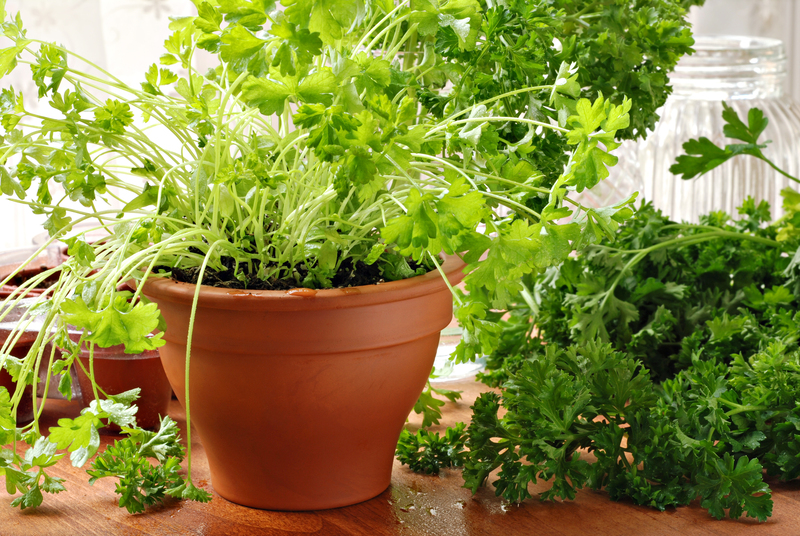Achieving Orchid Success
Posted on 19/05/2025
Achieving Orchid Success: A Complete Guide for Beginners and Enthusiasts
Welcome to your ultimate guide on achieving success with orchids. Whether you're a curious beginner or a passionate grower, this in-depth article will help you unlock the secrets of orchid care, cultivation, and blooming satisfaction. Read on to discover proven methods, expert tips, and effective strategies for raising vibrant, healthy orchids in your home or garden.

Understanding Orchids: The First Step to Success
Orchids, with their exquisite blooms and fascinating diversity, captivate plant lovers worldwide. Belonging to the family Orchidaceae, they are one of the largest groups of flowering plants, consisting of more than 25,000 species and 100,000 hybrids! While some species grow in soil, most cultivated orchids are epiphytes, meaning they attach to tree trunks or rocks in their natural habitat.
- Phalaenopsis (Moth Orchids): Ideal for beginners due to their forgiving nature and long-lasting blooms.
- Cattleya: Known for their vibrant, fragrant flowers.
- Dendrobium: A varied group with stunning flower spikes.
- Oncidium: "Dancing lady" orchids with intricate flower sprays.
- Vanda: Favoured by collectors for their unique growth and vivid colors.
Understanding basic orchid types is crucial in achieving orchid success, as each species may have slightly different requirements. However, there are universal principles that every orchid grower should embrace to ensure thriving, blooming plants.
The Fundamentals of Growing Healthy Orchids
1. Choosing the Right Orchid for You
Your journey to orchid growing success starts with picking the right plant. Beginners should pick varieties like Phalaenopsis or Dendrobium, which are more adaptable to home environments.
- Assess your growing environment (light, temperature, humidity).
- Research the care requirements for chosen species.
- Select a healthy plant with green, firm leaves and robust roots.
2. Understanding Orchid Potting Media
Unlike typical houseplants, most orchids require special potting media that mimic their natural epiphytic habitat. The right substrate will ensure good drainage and air flow to the roots.
- Bark chips: Excellent for Cattleya and Phalaenopsis.
- Sphagnum moss: Holds moisture, suitable for small or young orchids.
- Coconut husk: Retains some water but allows for aeration.
- Perlite or charcoal: Added to increase drainage and combat root rot.
Tip: Avoid regular potting soil, as it retains too much water and can suffocate orchids!
3. Mastering Watering Techniques
Proper watering is perhaps the most critical factor in orchid care and successful cultivation.
- Check the moisture level before watering; orchids prefer to dry slightly between waterings.
- Water thoroughly but let excess drain away. Do not let your orchid sit in water.
- Use room temperature water, ideally rainwater or distilled water if your tap water is hard or salty.
- Reduce watering frequency during winter or dormant periods.
Overwatering remains the number one enemy of healthy, thriving orchids!
4. Achieving Optimal Light Levels
For orchid success indoors, light is a key variable. Orchids typically prefer bright, indirect sunlight; however, specific needs vary by genus:
- Phalaenopsis: Medium to low indirect light. East-facing windows are ideal.
- Cattleya and Vanda: High, filtered light. South or west exposures work best with some shading.
- Dendrobium: Moderate to bright light.
Leaves are great indicators: dark green leaves suggest not enough light, while yellowish or red-tinged leaves indicate too much.
5. Temperature and Humidity Management
Orchids generally thrive in temperatures between 65?F to 80?F (18?C to 27?C) during the day, and slightly cooler at night. Humidity should be between 40-70% for optimal growth.
- Utilize a humidity tray or room humidifier to maintain adequate moisture.
- Ensure good air circulation around your orchids to prevent fungal issues.
- Avoid placing orchids in drafty areas or next to heating/cooling vents.
Advanced Strategies for Consistent Orchid Blooming
Fertilizing for Orchid Growth and Flowers
To achieve abundant orchid blooms, use a balanced fertilizer formulated specifically for orchids. Follow the mantra: "weakly, weekly" - dilute the fertilizer to half or quarter strength and apply once a week during the growing season.
- Use a high-nitrogen formula during active growth; switch to high-phosphorus prior to and during blooming.
- Flush the potting media with plain water once a month to remove excess salts.
Repotting for Continued Success
Orchids should be repotted every 1-2 years, or when the potting mix breaks down. Signs your orchid needs repotting:
- Roots overflowing the pot or circling tightly.
- Potting mixture smells sour or has decomposed.
- Growth has slowed significantly.
Repotting not only gives your plant fresh growing medium but prevents disease and supports continued orchid success.
Dealing with Orchid Pests and Diseases
Common issues affecting orchids include mealybugs, scale, spider mites, and fungal/bacterial infections.
- Isolate new plants before introducing them to your collection.
- Wipe leaves with a soapy solution to manage pests.
- Improve air circulation and avoid overwatering to prevent mold and root rot.
- Use insecticidal soap or horticultural oils for infestations.
Encouraging Blooms Through Stress
Some orchids, such as Phalaenopsis, require a drop in night temperature or reduced watering to trigger flowering. Mimic their natural conditions by:
- Decreasing nighttime temperature by 10?F (5?C) in the fall.
- Reducing water and fertilizer until a new flower spike appears.
Common Challenges in Achieving Orchid Success
Even the most experienced growers encounter setbacks. Recognizing and correcting problems early on is key to orchid growing success.
- Yellow Leaves: Can indicate overwatering, improper light, or natural aging of lower leaves.
- No Flowers: Causes include insufficient light, lack of temperature variation, or not enough 'rest' during dormant periods.
- Wilting or Wrinkled Leaves: Suggests root rot (overwatering) or underwatering.
- Black Spots/Soft Roots: Fungal/bacterial infections--sterilize tools, remove affected areas, repot if necessary.
Patience and observation are virtues; with time, you'll learn to read your orchids' signals and adjust their care for consistent success.
Creating the Perfect Orchid Display
Beyond growing healthy plants, displaying orchids artfully is part of orchid success! Use attractive containers, decorative stakes, or hang them in baskets to showcase their natural beauty. Group different species together for a stunning indoor jungle, or highlight specimen plants on a windowsill.
- Use clear plastic pots for monitoring root health and moisture levels.
- Orchid baskets allow for easy air flow (great for Vanda and some epiphytic species).
- Topdress with moss or decorative pebbles for a polished look--just ensure proper drainage.
Frequently Asked Questions About Orchid Success
How often should I water my orchid?
It depends on species, potting mix, and environment. Generally, water when the top inch of potting media feels dry. Weekly, or every 5-10 days, is a safe rule for most orchids.
Why won't my orchid bloom?
Check if your plant is getting enough light, if night temperatures drop, and if you're using a bloom-boosting fertilizer. Some orchids need a rest period before flowering.
Can I grow orchids in regular potting soil?
No. Use special orchid mix for best results, as regular soil retains too much moisture and suffocates the roots.
Should I cut the flower spike after blooming?
With Phalaenopsis, if the spike remains green, you can cut above a node to potentially prompt reblooming. For other types, cut the spike at the base to let the plant rest.

Orchid Success Stories: Inspiration from Around the Globe
Many orchid enthusiasts started small and, with patience and care, have achieved spectacular results. Online communities, such as the American Orchid Society, Reddit's r/orchids, and various Facebook groups, offer a wealth of success stories, tips, and support. Exploring these stories can provide inspiration and practical advice from real growers.
Conclusion: Your Journey to Orchid Success Begins Now
Achieving orchid success is a rewarding pursuit filled with learning, beauty, and satisfaction. Remember, every orchid is unique--observe, experiment, and embrace the process. With the knowledge from this guide, you are well-equipped to cultivate orchids that flourish and bloom year after year.
- Provide suitable light, temperature, and humidity for your orchid's type.
- Water carefully to avoid root rot.
- Use proper orchid potting media and containers.
- Fertilize thoughtfully to encourage growth and blooms.
- Repot as needed and monitor for pests or disease.
Start your own orchid collection today and experience the joy of nurturing these mesmerizing plants. You, too, can join the ranks of successful orchid growers by following the principles and techniques shared here.
Happy growing--and may your orchids reward you with their breathtaking blooms!

